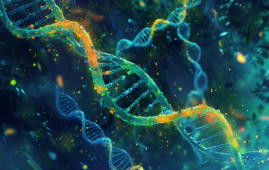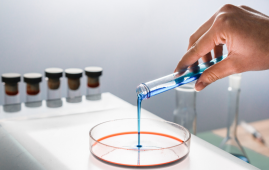

Cancer is curable now. However, according to statistics published by Statistics Korea last year, cancer will continue to be the leading cause of death in Korea in 2021. This emphasizes the ongoing battle against cancer, which calls for efficient preventative measures, prompt diagnosis, and prompt intervention through efficient therapy. However, the issue of whether prompt therapy after diagnosis is possible still exists.
The ability of a fluorescent probe for tumor-initiating cell yellow (TiY) to stain the cells responsible for tumor growth and simultaneously suppress the growth of those cells was investigated by a POSTECH research team led by Professor Young Tae Chang (Department of Chemistry) and Research Professor Nam-Young Kang (Department of Convergence IT Engineering).
Theranostics, a journal that includes treatment, diagnosis, and personalized medicine, published the empirical study data.
In a prior investigation, the research team created fluorescent probe TiY, which functions like a fluorescent highlighter and can specifically identify and find tumor-initiating cells (TICs). On the strength of this success, the team has carried out a study to examine the potential of TiY for cancer treatment.
The researchers in the current investigation noticed changes in cancerous stem cells in response to various TiY concentrations. The group transferred lung cancer patient cancer stem cells into mice as part of an experimental study.
The team progressively raised the dose of TiY injected intravenously into the mice during their tests in order to assess the therapeutic effects of TiY staining.
TiY has been shown to have the capacity to color cancer stem cells at low concentrations. However, as TiY concentration rises, it demonstrates a remarkable capacity to successfully impede the development of cancer stem cells, resulting in their significant annihilation. The mechanism of TiY molecules, which have the ability to selectively bind themselves to vimentin, a muscle-specific protein that is a component of the cytoskeleton of cancerous stem cells, enables this selective targeting and treatment. TiY can then target and inhibit these cell types specifically.
Because cancerous cells can spread to other tissues or recur, current cancer treatments frequently fail to completely remove tumors. Given the difficulty, TiY offers a hopeful strategy for treating cancer because it can expedite both diagnosis and treatment in a single step.
more recommended stories
 Spatial Computing Explains How Brain Organizes Cognition
Spatial Computing Explains How Brain Organizes CognitionKey Takeaways (Quick Summary) MIT researchers.
 Gestational Diabetes Risk Identified by Blood Metabolites
Gestational Diabetes Risk Identified by Blood MetabolitesKey Takeaways (Quick Summary for Clinicians).
 Phage Therapy Study Reveals RNA-Based Infection Control
Phage Therapy Study Reveals RNA-Based Infection ControlKey Takeaways (Quick Summary) Researchers uncovered.
 Pelvic Floor Disorders: Treatable Yet Often Ignored
Pelvic Floor Disorders: Treatable Yet Often IgnoredKey Takeaways (Quick Summary) Pelvic floor.
 Urine-Based microRNA Aging Clock Predicts Biological Age
Urine-Based microRNA Aging Clock Predicts Biological AgeKey Takeaways (Quick Summary) Researchers developed.
 Circadian Control of Neutrophils in Myocardial Infarction
Circadian Control of Neutrophils in Myocardial InfarctionKey Takeaways for HCPs Neutrophil activity.
 E-Cigarette Use and Heart Attack Risk in Former Smokers
E-Cigarette Use and Heart Attack Risk in Former SmokersKey Takeaways for Clinicians and Nurses.
 36-Week Pre-eclampsia Screening May Reduce Term Risk
36-Week Pre-eclampsia Screening May Reduce Term RiskA New Preventive Strategy for Term.
 Cardiovascular Risk and Sudden Cardiac Death in Diabetes
Cardiovascular Risk and Sudden Cardiac Death in DiabetesRising Sudden Cardiac Death (SCD) Risk.
 Poor Kidney Function and Alzheimer’s Biomarkers Explained
Poor Kidney Function and Alzheimer’s Biomarkers ExplainedPoor kidney function may influence levels.

Leave a Comment